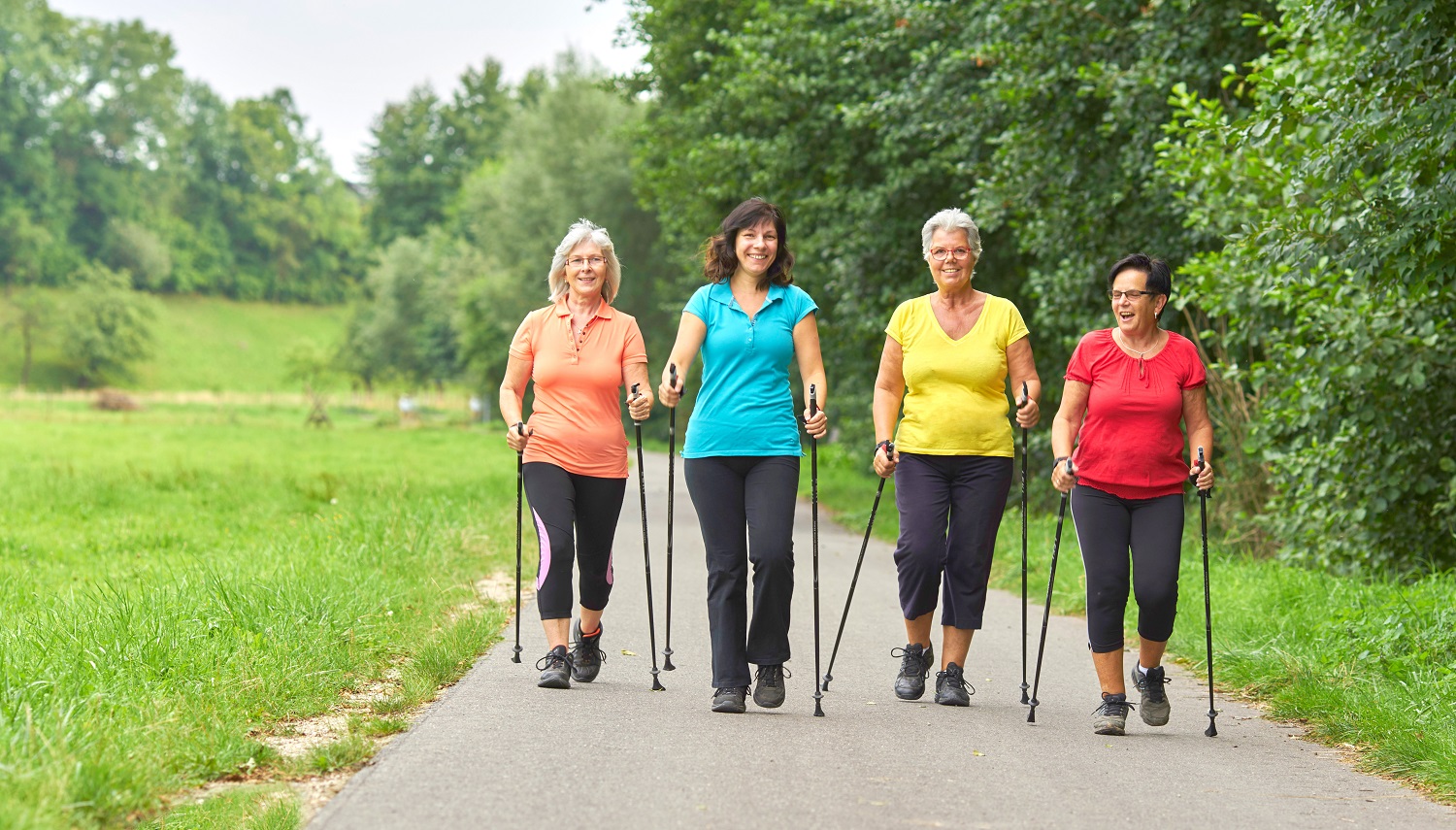Nordic walking offers super fat-burning workouts
Looking for a great fat-burning workout? Nordic walking is designed to trim your belly and slim you down.
 Best for: A trim tummy without the hard work. Why it’s a fat blaster: You burn 20 per cent more calories Nordic walking (using cross-country ski-type poles to involve your upper body) than walking without poles. Plus, your workout actually feels easier because the poles help propel you forward. Another bonus: You’ll build upper-body strength and take some pressure off your knees.
Best for: A trim tummy without the hard work. Why it’s a fat blaster: You burn 20 per cent more calories Nordic walking (using cross-country ski-type poles to involve your upper body) than walking without poles. Plus, your workout actually feels easier because the poles help propel you forward. Another bonus: You’ll build upper-body strength and take some pressure off your knees.
Total time: 45 minutes | Calories burned: 284
How to do it: First, find the right poles says Suzanne Nottingham, a long-time fitness instructor who developed a Nordic-walking program for pole manufacturer Leki USA. Hold them out in front of you, hands on the grips and pole tips on the ground; your hands should be slightly lower than your waist. Stick to flat pavement or sidewalks for your first few Nordic walks, and then mix things up by adding in hills or heading off-road to a park or nature reserve. Walk at a comfortable pace with a loose grip on the pole handles for 15 minutes to warm up. Poles should be angled backward (not in front of you), with arms and hands in front. Aim for long strides and nearly straight arms (a slight bend in the elbows); allow your torso to rotate a bit with each arm swing. By the end of the warm-up, your pace will probably have increased, although you may not feel like you’re working very hard. Keep a very brisk pace for 20 minutes, then ease up for a 10-minute cool down.
Do-it-better trick: To create more resistance, grip harder with your first two fingers and thumb—while still lightly cupping handles with your palm and other two fingers—and think about pressing the poles’ rubber tips into the ground.
Walk off fat fast: Speed it up
Best for: Burning fat super fast.
Why it’s a fat blaster: Adding bursts of intensity to your walk burns more calories and helps you get fit faster. Plus, setting mini-goals keeps you motivated.
How to do it: Trim your 45-minute neighborhood walk to 40, says Jay Blahnik, a certified personal trainer in Laguna Beach, California, who has developed walking and running audio workouts for Nike. Instead of trying to walk the whole route at a faster pace, which can be tough, try this: Choose a marker for every five minutes of your walk (a red mailbox or the corner Starbucks, for example). As soon as you reach one of your eight markers, increase your pace for one minute. Soon you’ll be using the markers to gauge your progress— last week you passed the post office at 18
minutes, this time you whizzed by at 17. When you’ve cut five minutes, give yourself a reward (like a pedicure), then aim to trim even more minutes next time.
Do-it-better trick: Take smaller, quicker steps to increase your pace. Keep your stride smooth and efficient—don’t tense up your hips and pelvis.
Total time: 40 minutes | Calories burned: 195
Source: health.com
Walking tall
Tips to correct your walk
For healthy adults, walking is so automatic that it’s impossible to remember having learned how to do it. Yet it’s easy to pick up a few bad habits along the way that make our walks less efficient—and maybe even injurious. The good news is that even patterns established over a lifetime can be reversed.
Ideally, by adulthood a person will walk with head erect, back straight, arms bent, knees extending and flexing, and feet striking the ground with the heel and pushing off with the toes. Our upper bodies also get into the act. Unfortunately, few of us achieve the ideal gait, and fewer still maintain it. Over time, we may lower our heads and thrust our trunks forward. Instead of swinging, our arms may dangle listlessly at our sides.
Bad habits aren’t the only reason our gaits go awry. A variety of health conditions can throw us off stride, too. Arthritis is perhaps the most common. Good reflexes, healthy joints, strong muscles, and the vestibular system in the ear, which gives us a sense of spatial positioning, all play a role in keeping us upright. Take away any of them, and our balance suffers.
There are some tips to correct bad walking habits:
Look ahead. Train your sights 10 to 20 feet ahead of you. If you need to check the ground to avoid obstacles, lower your eyes, not your head.
Stretch your spine. Your shoulders should be level and square. Tuck your buttocks in.
Bend your arms. Flex your elbows at close to 90-degree angles and let your arms swing at waist level.
Take measured steps. Too long a stride throws you off balance. Concentrate on taking shorter steps, but more of them.
Source: Harvard Health Letter






